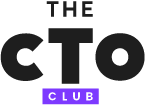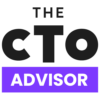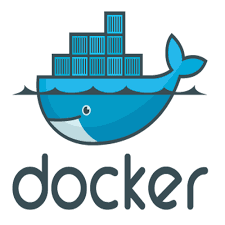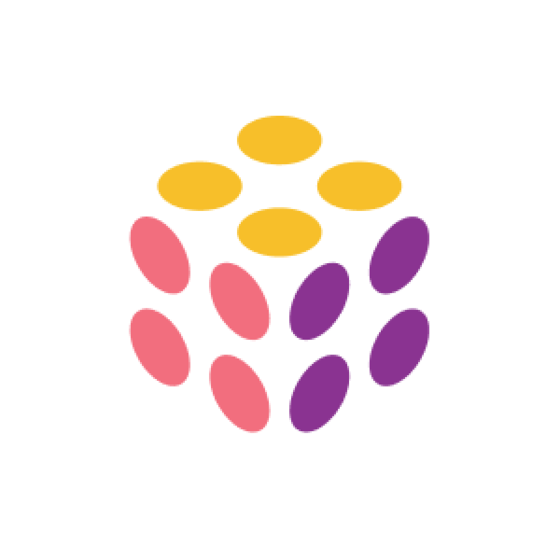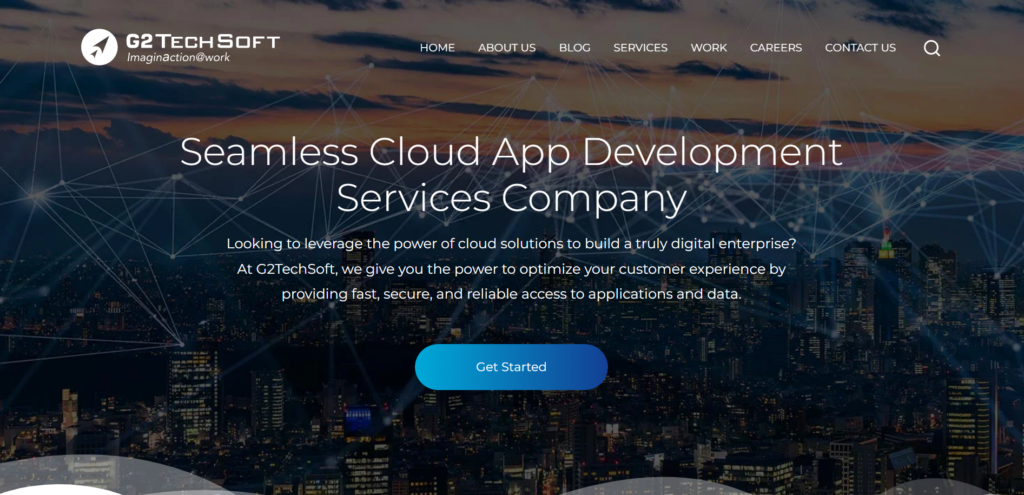Best Cloud Application Development Platform Shortlist
Here’s my shortlist of the best cloud application development platform:
Our one-on-one guidance will help you find the perfect fit.
Choosing a cloud application development platform isn’t just about ticking boxes—it’s about solving the pain you feel when your team spends more time managing infrastructure than writing code. Maybe you’ve been burned by platforms that lock you into rigid workflows, lack native support for CI/CD, or make scaling more painful than it should be.
I’ve worked with engineering teams across SaaS startups and high-growth product orgs to evaluate cloud platforms that actually help you move faster without sacrificing control. I’ve tested these tools in real-world builds, not just demo sandboxes, and I know what separates the flexible, developer-friendly platforms from the ones that slow teams down.
In this guide, I’ll walk you through the best cloud app development platforms based on speed to deploy, integration capabilities, and developer experience so you can focus on building great software, not wrangling infrastructure.
Why Trust Our Software Reviews
We’ve been testing and reviewing SaaS development software since 2023. As tech experts ourselves, we know how critical and difficult it is to make the right decision when selecting software. We invest in deep research to help our audience make better software purchasing decisions.
We’ve tested more than 2,000 tools for different SaaS development use cases and written over 1,000 comprehensive software reviews. Learn how we stay transparent & check out our software review methodology.
Best Cloud Application Development Platform Summary
This comparison chart summarizes pricing details for my top cloud application development platform selections to help you find the best one for your budget and business needs.
| Tool | Best For | Trial Info | Price | ||
|---|---|---|---|---|---|
| 1 | Best for consulting services | Not available | Pricing upon request | Website | |
| 2 | Best for app deployment | Free demo | From $0.005/hour | Website | |
| 3 | Best for enterprise needs | Free trial available | Pricing upon request | Website | |
| 4 | Best for data transformation | Free trial + free demo available | From $1,000/month | Website | |
| 5 | Best for task automation | Not available | Pricing upon request | Website | |
| 6 | Best for HIPAA compliance | Free 30-day trial | From $499/month | Website | |
| 7 | Best for network reliability | Not available | Pricing upon request | Website | |
| 8 | Best for digital transformation | Not available | Pricing upon request | Website | |
| 9 | Best for custom solutions | Not available | Pricing upon request | Website | |
| 10 | Best for security observability | Not available | Pricing upon request | Website |
-

Docker
Visit WebsiteThis is an aggregated rating for this tool including ratings from Crozdesk users and ratings from other sites.4.6 -

Pulumi
Visit WebsiteThis is an aggregated rating for this tool including ratings from Crozdesk users and ratings from other sites.4.8 -

GitHub Actions
Visit Website
Best Cloud Application Development Platform Review
Below are my detailed summaries of the best cloud application development platform that made it onto my shortlist. My reviews offer a detailed look at the key features, pros & cons, integrations, and ideal use cases of each tool to help you find the best one for you.
PwC Cloud Solutions is a consultancy service aimed at businesses looking to leverage cloud technology for digital transformation. It primarily serves large enterprises, offering strategic guidance and implementation support for cloud adoption.
Why I picked PwC Cloud Solutions: The focus on consulting services makes it ideal for companies needing expert advice on cloud strategies. PwC provides tailored solutions that align with your business goals, ensuring effective cloud integration. Their comprehensive approach includes risk assessment and management to safeguard your operations. In my experience, having a partner like PwC can significantly ease the transition to cloud-based systems.
Standout features & integrations:
Features include tailored cloud strategies that match your business objectives. The platform offers risk assessment services to identify potential challenges in your cloud journey. PwC also provides implementation support, ensuring a smooth transition to cloud environments.
Integrations include Microsoft Azure, AWS, Google Cloud Platform, IBM Cloud, Oracle Cloud, SAP, Salesforce, ServiceNow, VMware, and Cisco.
Pros and cons
Pros:
- Tailored cloud solutions
- Comprehensive risk assessment
- Smooth implementation support
Cons:
- Requires extensive collaboration
- Limited to enterprise solutions
Heroku is a cloud platform service aimed at developers needing an easy way to deploy, manage, and scale applications. It serves startups and small to medium-sized businesses, offering a streamlined application deployment process.
Why I picked Heroku: Its focus on app deployment makes it ideal for developers who want to get their applications up and running quickly. It provides a user-friendly interface and supports multiple programming languages, making it versatile for different projects. Heroku's automated platform handles infrastructure tasks, so your team can concentrate on coding. The scalability features allow you to adjust resources based on demand effortlessly.
Standout features & integrations:
Features include a user-friendly interface that simplifies app management. The platform supports various programming languages, providing flexibility for your development needs. Heroku's automated infrastructure management allows you to focus on building applications without worrying about server maintenance.
Integrations include GitHub, Slack, Datadog, New Relic, SendGrid, Papertrail, Salesforce, Heroku Postgres, Heroku Redis, and Twilio.
Pros and cons
Pros:
- Automated infrastructure management
- Supports multiple languages
- Quick app deployment
Cons:
- Requires understanding of Heroku-specific tools
- Limited control over server configurations
IBM Cloud Services is a comprehensive cloud platform for enterprises seeking scalable and secure cloud solutions. It serves large organizations by offering a wide range of services, including infrastructure, AI, and analytics.
Why I picked IBM Cloud Services: Its focus on enterprise needs makes it suitable for large-scale operations requiring robust infrastructure. You can leverage its AI and analytics capabilities to enhance decision-making processes. The platform’s security features ensure your data remains protected. Its global network supports international business operations, providing reliability and scalability.
Standout features & integrations:
Features include advanced AI tools that support data-driven decision-making. The platform offers strong security measures to protect your data and applications. IBM Cloud Services also provides a global network for reliable international operations.
Integrations include Red Hat OpenShift, VMware, SAP, Salesforce, Cisco, Docker, Kubernetes, MongoDB, Watson, and Jenkins.
Pros and cons
Pros:
- Suitable for large enterprises
- Strong security measures
- Extensive global network
Cons:
- May need specialized training
- Complex for new users
Matillion is a cloud-based data integration platform suited for businesses that need to transform and load data efficiently. It primarily serves data teams and analysts, providing tools to streamline ETL (extract, transform, load) processes.
Why I picked Matillion: Its strong focus on data transformation makes it ideal for businesses handling large datasets. The platform offers intuitive design tools that simplify complex data workflows. With its scalable architecture, you can manage data processes of varying sizes effortlessly. Matillion's support for multiple data sources ensures you can integrate your data seamlessly.
Standout features & integrations:
Features include an intuitive interface that simplifies the creation of data workflows. The platform allows for easy scaling to handle large data volumes. It also offers extensive support for various data sources, making integration straightforward.
Integrations include Amazon Redshift, Snowflake, Google BigQuery, Azure Synapse, Salesforce, SAP, Oracle, MySQL, MongoDB, and PostgreSQL.
Pros and cons
Pros:
- Simplifies data transformation processes
- Handles large datasets efficiently
- Supports various data sources
Cons:
- Requires technical knowledge
- Not ideal for small datasets
Airplane.dev is a developer-centric platform aimed at automating repetitive and manual tasks. It targets development teams seeking to enhance productivity by reducing the time spent on routine operations.
Why I picked Airplane.dev: Its focus on task automation helps you streamline your workflow efficiently. The platform allows you to create and manage scripts that automate various tasks, saving your team countless hours. Built-in logging and monitoring features ensure you can track and manage processes easily. This makes Airplane.dev an excellent choice for teams looking to boost productivity through automation.
Standout features & integrations:
Features include an intuitive interface that simplifies task creation and management. The platform offers built-in logging and monitoring to keep track of automated processes. You can also create reusable scripts, which further enhances efficiency and saves time.
Integrations include GitHub, Slack, Docker, AWS, Google Cloud, Microsoft Azure, PostgreSQL, MySQL, MongoDB, and Redis.
Pros and cons
Pros:
- Simplifies task automation
- Reduces manual workload
- Built-in logging and monitoring
Cons:
- Limited to technical users
- May need script customization
Aptible is a Platform as a Service (PaaS) primarily used by startups for secure and compliant hosting of applications and databases. It helps teams manage infrastructure efficiently while focusing on development tasks.
Why I picked Aptible: Aptible's focus on HIPAA compliance makes it ideal for healthcare-related applications. Its standout features, like automatic encryption and zero-downtime deployments, support its compliance capabilities. You can easily manage applications with 24/7 monitoring and instant rollbacks, reducing operational burdens. These features help you maintain security standards without extra hassle.
Standout features & integrations:
Features include automatic database encryption, zero-downtime deployments, and 24/7 monitoring. These ensure your applications are secure and compliant with industry standards. The platform also provides instant rollbacks, which help quickly address any deployment issues.
Integrations include Git, Docker, and more, allowing you to use familiar tools and workflows in your development process.
Pros and cons
Pros:
- Reduces operational workload
- Quick application deployment
- Simplifies compliance management
Cons:
- May not suit large enterprises
- Learning curve for new users
Verizon offers cloud solutions focused on providing reliable network services to businesses of all sizes. It serves enterprises and small businesses by delivering connectivity, security, and communication services.
Why I picked Verizon: Its focus on network reliability ensures consistent connectivity for your business operations. Verizon provides secure communication channels, so your data stays protected. With its global reach, you can maintain operations across different regions without worrying about connectivity issues. This makes Verizon a solid choice for businesses that prioritize dependable network services.
Standout features & integrations:
Features include high-speed connectivity that supports business operations efficiently. The platform provides secure communication services, ensuring your data remains protected. Verizon also offers global coverage, allowing your team to stay connected across various regions.
Integrations include Cisco, Microsoft Teams, AWS, Google Cloud, IBM Cloud, SAP, Oracle, Salesforce, Zoom, and VMware.
Pros and cons
Pros:
- High-speed connectivity
- Secure communication channels
- Reliable global network coverage
Cons:
- Not ideal for small-scale operations
- Initial configuration time-consuming
Net Solutions is a digital product development company serving businesses looking to transform their digital presence. It caters to a wide range of industries, providing services like web and mobile app development, UX/UI design, and analytics.
Why I picked Net Solutions: The company focuses on digital transformation, helping you modernize your business through innovative technology. It offers comprehensive services, from strategy to execution, ensuring your digital products are both effective and engaging. The team’s expertise in UX/UI design enhances user experience, making your applications intuitive and user-friendly. Analytics services provide insights to optimize your business outcomes.
Standout features & integrations:
Features include custom web and mobile app development that aligns with your business goals. UX/UI design focuses on creating intuitive user interfaces that enhance user engagement. Their analytics services offer data-driven insights to help you make informed business decisions.
Integrations include Shopify, Magento, WooCommerce, Salesforce, Microsoft Dynamics, SAP, Oracle, HubSpot, Marketo, and Google Analytics.
Pros and cons
Pros:
- Strong focus on digital transformation
- Comprehensive service offerings
- Data-driven analytics insights
Cons:
- Complexity for non-tech users
- Limited to larger projects
G2 TechSoft is a cloud application development platform focused on digital transformation for businesses of all sizes. Its main user base includes small enterprises to large corporations, offering services like product engineering and AI innovations.
Why I picked G2 TechSoft: The platform excels in providing custom solutions tailored to your specific business needs. Its expertise in AI and IoT allows for advanced technology integration. Your team can benefit from managed services that ensure smooth operations. The commitment to understanding client needs sets it apart in delivering personalized solutions.
Standout features & integrations:
Features include product engineering services that cater to unique business requirements. AI and IoT innovations are seamlessly integrated to enhance your digital transformation journey. Managed services ensure your operations run efficiently and without interruption.
Integrations include Microsoft Azure, Amazon Web Services, Google Cloud Platform, Salesforce, Oracle, SAP, IBM Cloud, Docker, Kubernetes, and Jenkins.
Pros and cons
Pros:
- Diverse industry experience
- Reliable managed services
- Client-focused approach
Cons:
- Complexity for non-tech users
- May need customization time
Panoptica.app is a security platform designed for developers and IT teams focused on enhancing application security. It helps organizations monitor and manage security risks across their cloud-native applications.
Why I picked Panoptica.app: The platform excels in providing comprehensive security observability, which is crucial for maintaining secure cloud environments. It offers real-time monitoring and alerts, helping your team respond quickly to potential threats. The detailed security analytics give insights into vulnerabilities, allowing proactive management of risks. This makes Panoptica.app a valuable tool for teams prioritizing security in their development processes.
Standout features & integrations:
Features include real-time monitoring that keeps you updated on security threats. The platform provides detailed analytics to identify and manage vulnerabilities effectively. It also offers customizable alerts, enabling your team to respond swiftly to any security incidents.
Integrations include Kubernetes, Docker, AWS, Google Cloud, Microsoft Azure, GitHub, GitLab, Jenkins, Slack, and PagerDuty.
Pros and cons
Pros:
- Comprehensive security insights
- Real-time threat monitoring
- Customizable alert settings
Cons:
- Requires security expertise
- Initial setup can be complex
Other Cloud Application Development Platform
Here are some additional cloud application development platform options that didn’t make it onto my shortlist, but are still worth checking out:
- HPE GreenLake
For hybrid cloud
- Harness.io
For CI/CD processes
- Zoho Creator
For low-code development
- Salesforce Platform
For CRM integration
- SAP Business Technology Platform
For streamlining operations with intelligent enterprise applications
- Vercel
For front-end developers prioritizing deployment and scaling efficiency
- Cloudways
For managing and scaling web applications on top cloud infrastructure
- PythonAnywhere
For Python hosting
- N-iX
For custom software development
- Chef Software
For infrastructure automation
- Azure Cloud Services
For enterprise cloud solutions
- AWS Elastic Beanstalk
For easy app deployment
- Google Cloud Functions
For serverless computing
- Crowdbotics
For rapid mobile app and web app development with minimum coding
- Azure Functions
For event-driven apps
- Google Cloud
For global reach
Cloud Application Development Platform Selection Criteria
When selecting the best cloud application development platform to include in this list, I considered common buyer needs and pain points like scalability and integration capabilities. I also used the following framework to keep my evaluation structured and fair:
Core Functionality (25% of total score)
To be considered for inclusion in this list, each solution had to fulfill these common use cases:
- Deploy applications
- Scale infrastructure
- Manage databases
- Monitor performance
- Secure applications
Additional Standout Features (25% of total score)
To help further narrow down the competition, I also looked for unique features, such as:
- Automated scaling
- Real-time analytics
- Multi-cloud support
- Customizable templates
- Built-in security tools
Usability (10% of total score)
To get a sense of the usability of each system, I considered the following:
- Intuitive interface
- Easy navigation
- Minimal learning curve
- Clear documentation
- Responsive design
Onboarding (10% of total score)
To evaluate the onboarding experience for each platform, I considered the following:
- Availability of training videos
- Interactive product tours
- Access to templates
- Supportive chatbots
- Live webinars
Customer Support (10% of total score)
To assess each software provider’s customer support services, I considered the following:
- 24/7 availability
- Multiple support channels
- Quick response times
- Knowledgeable staff
- Comprehensive help center
Value For Money (10% of total score)
To evaluate the value for money of each platform, I considered the following:
- Competitive pricing
- Flexible plans
- Transparent pricing model
- Feature-to-cost ratio
- Free trial availability
Customer Reviews (10% of total score)
To get a sense of overall customer satisfaction, I considered the following when reading customer reviews:
- Overall satisfaction ratings
- Commonly praised features
- Frequent complaints
- User feedback on performance
- Recommendations from users
How To Choose Cloud Application Development Platform
It’s easy to get bogged down in long feature lists and complex pricing structures. To help you stay focused as you work through your unique software selection process, here’s a checklist of factors to keep in mind:
| Factor | What to Consider |
| Scalability | Ensure the platform can grow with your business. Look for features that allow you to increase resources as needed without service interruptions. |
| Integrations | Check for compatibility with the tools your team already uses. Seamless integration with existing systems like CRM, databases, and communication tools is key. |
| Customizability | Determine if the platform allows you to tailor solutions to fit your specific business needs. Custom dashboards and workflows can be beneficial. |
| Ease of Use | Evaluate the user interface and overall experience. A low-code development platform that's easy to navigate will save your team time and reduce the learning curve. |
| Budget | Compare pricing plans to ensure they fit your financial constraints. Consider the total cost of ownership, including any hidden fees or additional charges. |
| Security Safeguards | Look for robust security features to protect your data. Encryption, regular updates, and compliance with industry standards are essential for safeguarding information. |
| Support | Assess the quality and availability of customer support. 24/7 support can be crucial if you encounter issues that need immediate attention. |
| Performance | Consider the platform’s reliability and speed. Frequent downtimes or slow response times can hinder productivity and affect your bottom line. |
Trends In Cloud Application Development Platform
In my research, I sourced countless product updates, press releases, and release logs from different cloud application development platform vendors. Here are some of the emerging trends I’m keeping an eye on:
- Serverless Architecture: More platforms are adopting serverless computing, allowing developers to focus on writing code without managing servers. This trend simplifies deployment and can reduce costs. AWS Lambda and Google Cloud Functions are leading in this area.
- AI-Driven Development: Some platforms are integrating AI to assist in coding and testing, improving accuracy and efficiency. AI can automate error detection and optimize code. Microsoft Azure is incorporating AI tools to enhance developer productivity.
- Edge Computing: There's a growing shift towards processing data closer to where it's generated, reducing latency and bandwidth use. This trend supports real-time applications. Vendors like AWS are expanding features to support edge computing.
- Microservices Architecture: Platforms are increasingly supporting microservices, allowing applications to be broken down into smaller, independent services. This approach enhances scalability and flexibility. Kubernetes is a popular choice for managing microservices.
- Focus on Sustainability: Vendors are emphasizing eco-friendly practices, optimizing energy consumption in data centers. This trend aligns with corporate responsibility goals. Google Cloud, for example, is investing in renewable energy to power its operations.
What Is A Cloud Application Development Platform?
A cloud application development platform is a suite of tools that help developers create, deploy, and manage applications in the cloud. These types of DevOps platforms are generally used by software developers, IT professionals, and businesses looking to leverage cloud technology for greater scalability and efficiency.
Features like serverless architecture, AI-driven development, and microservices architecture support efficient coding, real-time processing, and scalability. Overall, these platforms provide a flexible and efficient way to build and manage applications, helping users save time and resources.
Features Of Cloud Application Development Platform
When selecting a cloud application development platform, keep an eye out for the following key features:
- Serverless architecture: This allows developers to deploy code without worrying about server management, reducing overhead and simplifying the deployment process.
- AI-driven development: AI tools assist in coding and testing, helping to automate error detection and optimize code efficiency.
- Microservices architecture: Enables applications to be divided into smaller, independent services, which enhances scalability and flexibility.
- Edge computing: Processes data closer to its source, reducing latency and improving real-time application performance.
- Customizability: Offers the ability to tailor solutions to fit specific business needs, providing custom dashboards and workflows.
- Real-time analytics: Provides immediate insights into application performance and user behavior, helping teams make data-driven decisions.
- Security safeguards: Includes features like encryption and compliance checks to protect data and ensure security standards are met.
- Scalability: Supports growing business needs by allowing resources to be adjusted without disrupting service.
- Integrations: Compatible with other tools and systems your team uses, enabling smooth data flow and collaboration.
- Cost management tools: Help monitor and optimize cloud resource usage, providing insights to reduce unnecessary expenses.
Benefits Of Cloud Application Development Platform
Implementing a cloud application development platform provides several benefits for your team and your business. Here are a few you can look forward to:
- Increased scalability: Easily adjust resources to meet growing demands without disrupting services, thanks to scalable infrastructure.
- Enhanced efficiency: Automate repetitive tasks and optimize workflows with features like serverless architecture and AI-driven development.
- Cost savings: Use cost management tools to monitor and reduce unnecessary expenses, keeping your budget in check.
- Improved security: Protect data with built-in security safeguards like encryption and compliance checks.
- Faster deployment: Deploy applications quickly and efficiently, minimizing downtime and speeding up time-to-market.
- Better collaboration: Integrations with existing tools ensure smooth data flow and enhance team collaboration.
- Real-time insights: Use real-time analytics to gain immediate insights into application performance, enabling data-driven decision-making.
Costs And Pricing Of Cloud Application Development Platform
Selecting a cloud application development platform requires an understanding of the various pricing models and plans available. Costs vary based on features, team size, add-ons, and more. The table below summarizes common plans, their average prices, and typical features included in cloud application development platform solutions:
Plan Comparison Table for Cloud Application Development Platform
| Plan Type | Average Price | Common Features |
| Free Plan | $0 | Basic deployment capabilities, limited storage, and community support. |
| Personal Plan | $5-$25 /user /month | Enhanced deployment features, moderate storage, and email support. |
| Business Plan | $30-$100 /user /month | Advanced analytics, increased storage, priority support, and integration with popular tools. |
| Enterprise Plan | $100+ /user /month | Customizable solutions, unlimited storage, dedicated support, advanced security features, and full integration capabilities. |
Cloud Application Development Platform FAQs
Here are some answers to common questions about the cloud application development platform:
What are the main challenges with a cloud-based application?
Security issues are a significant concern, as cloud environments can be vulnerable if not properly managed. Cost management is another challenge, as expenses can quickly escalate without careful monitoring. You might also face issues with resource allocation and the need for specialized expertise to manage the platform effectively.
What are the three major components of any cloud platform?
The three major components are SaaS (Software as a Service), PaaS (Platform as a Service), and IaaS (Infrastructure as a Service). SaaS provides software applications over the internet, PaaS offers a framework for developers to build applications, and IaaS provides virtualized computing resources over the internet.
What are the different types of cloud application development?
Cloud application development can be public, private, or hybrid. Public cloud services are available to anyone, private clouds are exclusive to specific users, and hybrid clouds combine elements of both. Each type offers different levels of control, security, and scalability to suit your business needs.
How do you manage costs in cloud application development?
To manage costs, you should regularly review usage and adjust resources as needed. Implementing cost management tools can help track expenses and optimize usage. It’s essential to understand billing structures and to choose the right plan that aligns with your budget and requirements.
How does cloud application development impact security?
Cloud application development impacts security by requiring new approaches to data protection. You’ll need to ensure encryption, compliance with regulations, and regular security audits. Leveraging built-in security features of cloud platforms can help safeguard your applications.
What are the benefits of using a cloud application development platform?
Benefits include increased scalability, enhanced efficiency, and cost savings. These platforms allow for faster deployment and better collaboration among teams. Real-time analytics and improved security measures are also significant advantages, providing comprehensive support for your development needs.
What's Next?
Boost your SaaS growth and leadership skills. Subscribe to our newsletter for the latest insights from CTOs and aspiring tech leaders. We'll help you scale smarter and lead stronger with guides, resources, and strategies from top experts!
